How You’d Survive on a Deserted Island, Based On Your Myers-Briggs® Personality Type
So, you’ve heard of the Myers-Briggs Type Indicator®, right? It’s that personality test that tells you whether you’re more of an E (Extroverted) or an I (Introverted), a T (Thinking) or F (Feeling), and so on. It’s great for workplace team building, relationship compatibility, and explaining why your coworker insists on sending those ‘inspirational’ Monday morning emails. But have you ever wondered how these different personality types would fare stranded on a deserted island? Well, now you don’t have to. Get ready for a psychological “Survivor” episode, because we’re about to embark on a humorous (I hope) exploration of how each Myers-Briggs® personality type might tackle the coconut-flavored, sun-soaked solitude of island life.
Find out which survivor (personality type) you’d be! Take our new personality questionnaire here. Or you can take the official MBTI® here.

The ENTJ
An ENTJ on a deserted island? They’d probably have the place running like a Fortune 500 company within a week. When they first wash up on the shore, they’d take a moment to shake the sand out of their hair. Then they’d stand tall, survey the scene and say, “Alright, Island. Let’s get down to business.”
By day two, they’d have drawn up a strategic plan for survival complete with daily objectives, key performance indicators and a roadmap for escape. By the end of the first week, they’d have built a fully functional office out of palm trees, complete with a corner desk made out of coconuts. Their survival strategy would be so efficient that they’d have a designated 15-minute break every day for existential contemplation and screaming into the void. And the best part? They’d call it “Island, Inc.” because even in the face of survival, brand image is key.
The ENFJ
An ENFJ marooned on a deserted island is a sight to behold, friends. They’d start by organizing a community meeting… except, there’s no community. Well, no problem for the ENFJ! They would swiftly befriend the local fauna – birds, crabs, the occasional sea turtle. Pretty soon they’d have the most harmonious society of wildlife since Snow White started singing in that forest.
They’d spend their days delivering impassioned speeches to the seagulls about the importance of shared responsibility in the gathering of coconuts. They’d teach the crabs the art of conflict resolution and emotional intelligence, and they’d be running group therapy sessions with the turtles by the end of the first month. Their campfire meetings will be the stuff of island legend, with every creature from the coconut crab to the albatross contributing to the collective good.
And when they’re finally rescued? They’d wave a tearful goodbye to their furry and feathered friends, promising to write and visit.
Meanwhile, the confused rescue crew would be wondering why the ENFJ is hugging a seagull and whispering about the power of unity into its feathered ear. And thus, the legacy of the ENFJ, the most socially responsible castaway, continues.
The INTJ
Oh, you thought you’d find an INTJ suffering on a deserted island? Think again. An INTJ would be more at home on a deserted island than a hermit crab in a perfectly-sized seashell. They’d relish the solitude, the quiet, the total lack of unexpected social interactions. A week in, you’d find them lounging in a hammock they’ve rigged up between two palms, sipping on something that looks suspiciously like a coffee.
“Is that… is that a coffee grinder?” you’d ask, astounded. They’d simply raise an eyebrow in response, and you’d realize that not only have they somehow fashioned a coffee grinder out of a coconut, but they’ve also discovered a previously unknown species of coffee bean tree on the island and are now cultivating it.
But it wouldn’t stop there. Having satisfied their caffeine needs, the INTJ would have moved onto bigger and better things. You’d find them gazing out into the ocean, a thoughtful look on their face. When asked what they’re doing, they’d reply with, “Exploring the nature of consciousness.”
Because, of course. What else would an INTJ do when marooned on a deserted island, but use the peace and quiet to delve into the mysteries of the human mind? When they’re finally rescued, they wouldn’t leave without their coffee tree sapling, now a cherished companion. And just like that, the world would gain a slightly more enlightened, caffeine-injected castaway, courtesy of a deserted island.
The INFJ
Now let’s turn our gaze to the INFJ, the desert island’s resident philosopher and part-time dreamer. If you’ve misplaced your INFJ, look no further than the nearest picturesque sunset – that’s where they’ll be, gazing at the horizon with a far-off look in their eyes. They’d be the island’s self-proclaimed poet laureate, composing eloquent odes to the waves, the palm trees, and even that one stubborn coconut that just refuses to fall.
But don’t be fooled by their dreamy disposition – the INFJ has a practical side too. You’d likely find them on day one, expertly weaving a fishing net out of vines while simultaneously pondering the meaning of life. By day three, they’d have invented a new philosophical school of thought and also figured out how to distill fresh water using a seashell, three palm fronds, and a starfish.
And, of course, the INFJ wouldn’t be an INFJ without their uncanny ability to empathize with… well, everything. They’d be the only person in recorded history to feel guilty about eating a coconut because they’ve spent too much time anthropomorphizing it. “It has feelings too, you know!” they’d exclaim, tearfully biting into their only source of food.
When the rescue arrives, our INFJ would probably have a heart to heart with the captain about the soulful eyes of the sea turtle they’ve named ‘Friedrich’ and would probably bring a tear to even the toughest seafarer’s eye. The island would miss its philosopher and the coconuts would breathe a sigh of relief, knowing they’re no longer someone’s moral dilemma.
Find out more about INFJs: 10 Reasons Why INFJs Feel Misunderstood
The ESTJ
Now, if an ESTJ found themselves on a deserted island, it would be less like ‘Cast Away’ and more like ‘The Apprentice. They’d be up at the crack of dawn, ready to seize the day and show that island who’s boss. With a stick in the sand, they’d sketch out an organized grid system for the island, carving it up into sections for foraging, sleeping, and a ‘business center’ where they’d negotiate with the monkeys over banana rations.
But the ESTJ wouldn’t stop at mere survival. Oh no, they’d set up a strict daily regime: sunrise meditation, followed by coconut gathering, banana negotiation, and a spot of leisurely fishing. Afternoons would be devoted to hut expansion projects, and evenings would be spent around the campfire, no doubt engaged in a lively debate with a parrot over leadership strategies.
By week two, they’d have set up a rigorous performance review system for the local wildlife. “That squirrel,” they’d mutter, pointing at a rather surprised critter, “Needs to work on his coconut cracking efficiency. And the dolphins – don’t get me started. Their fish-herding skills are subpar at best.”
When rescue finally arrives, they’d shake the captain’s hand firmly and say, “Well, it’s been a productive experience, but I have a 10:30 meeting with a starfish about seaweed procurement. You understand.” As they stride onto the rescue boat, clipboard in hand, one can’t help but feel that the island’s productivity is about to take a serious nosedive. The legend of the ESTJ, the most efficient castaway ever, will live on in the annals of deserted island lore.
The ESFJ
Let’s now turn our attention to the ESFJ, a personality type that would turn a deserted island into a deserted home. The moment their foot touched the sandy shore, they’d take in the coconut trees, the clear turquoise waters, the seagulls circling overhead and declare, “Family dinner at 6, everyone!” To which the seagulls would squawk in confusion and promptly fly away.
The heart of the ESFJ is a hearth fire, always ready to welcome others with warmth. But who to welcome when stranded on a deserted island? Enter Nilson, the battered football that washed up on the shore, and Frederick, an old boot with a hole that makes it look surprisingly expressive. In no time, the ESFJ would refer to them as family members, complete with backstory and all. Nilson, the football who always wanted to see the world, and Frederick the boot, who’s seen better days but still has a lot of sole.
Armed with a sense of tradition, the ESFJ would establish a daily schedule filled with family activities. Mornings would be spent together exploring the island or gathering food. Afternoons, dedicated to ‘family bonding’ activities like seashell painting or building elaborate sandcastles, and nights would be reserved for storytelling around the fire, often with the ESFJ narrating epic tales of Nilson’s and Frederick’s adventures.
The ESFJ’s island life would be filled with laughter, joy and a sense of belonging. Stranded? No, they weren’t stranded. They were on a long family vacation with the family they chose. The rescue team, when they finally arrive, would find a weary but cheerful ESFJ, Nilson, and Frederick ready to head home. With one last look at their island home, the ESFJ would say goodbye, knowing they’d leave a part of their heart there. And so, the saga of the ESFJ, the world’s most amiable castaway, sails into the sunset.
The ISTJ
Next in line, ladies and gentlemen, we have the ISTJ, the embodiment of the phrase ‘work hard, rest hard. Or in the case of a deserted island, ‘work hard, work harder’. When the ISTJ lands on a deserted island, you’d better believe that island is about to get the Marie Kondo treatment.
First things first, finding shelter. You might imagine your typical castaway-style hut, complete with palm fronds and a sandy floor. Not our ISTJ. They’d spend the first week meticulously constructing a small but exceedingly tidy cabin, complete with a perfectly thatched roof and alphabetically ordered seashell decorations. Every now and then, they’d dust off their hands, take a step back and mutter, “Well, it’s no Hilton but it’ll do.”
Next, it’s time to create fire. Again, you might imagine a typical castaway scenario, some flint, dry grass, maybe a prayer or two to the fire gods. But our ISTJ, always the pragmatist, would opt for a different approach. They’d spend their mornings collecting and polishing a set of abalone shells until they act as perfect mirrors. Voila, a solar lighter! They’d probably also draw up a fire-safety plan, just in case the local crabs get any funny ideas about starting wildfires.
Lastly, comes signaling for help. By this point, the ISTJ, who has already organized the local monkeys into a highly efficient coconut harvesting corporation, would put their logistics skills to good use. Using an arsenal of stones, they’d map out a massive ‘HELP’ sign that could be seen from space. They’d probably add a footnote too: “Dear Rescuers, please arrive between 9 am and 5 pm. I’ve got a tight schedule to keep.”
When the rescue team finally spots the sign and lands on the island, they’d be met with a sight that’s part ‘Survivor’, part ‘Extreme Home Makeover’. They’d find a slightly sunburned but otherwise organized ISTJ, who would hand them a neatly written list of suggested improvements for their rescue operations. As they leave the island, the ISTJ would call after them, “You’re welcome to visit any time, just give me a two-week notice!” And thus, the tale of the most organized castaway you’ve ever seen concludes.
The ISFJ
Now dear readers, let’s pay a visit to the ISFJ, the archetype of tradition and stability, in a setting where both of these are about as common as a working Wi-Fi signal. How does the ISFJ fare as a castaway? Well, let’s dive in.
From day one, the ISFJ would find a way to bring their love for routine and tradition to the sandy, coconut-littered shores. Breakfast? A balanced meal of whatever fruits they could find, served on a large leaf at precisely 7:30 AM. Lunch? A delightful spread of grilled fish (if the morning’s fishing expedition was successful), served at 1 PM sharp on a flat rock they’ve designated as the ‘dining table’. Dinner? A modest meal under the stars, served at 8 PM, eaten while recounting the day’s events to a rather unresponsive audience of starfish.
The island, under the ISFJ’s care, would undergo a transformation that would leave HGTV presenters in awe. They’d construct a sturdy little hut, complete with separate ‘rooms’ for sleeping, eating, and, believe it or not, a tiny space they’d call the ‘study’. Here, they’d spend their evenings drawing elaborate maps of the island on large leaves, or writing letters to their loved ones that they’d neatly roll up and place in scavenged bottles, in hopes that they’ll return home. Do they ask for help in these bottles? Of course not! They’re just checking in, letting their loved ones know they’re having a lovely time, thank you very much.
But the ISFJ’s pièce de résistance? Their SOS signal, of course. An epic creation of stones and logs, sturdy enough to survive the wildest storms, and large enough to be spotted by passing planes, satellites, and possibly extra-terrestrials. And just because they’re on a deserted island, doesn’t mean they forget their manners. Below the massive SOS, they’d add a smaller ‘Thank You’, because, well, it’s only polite to express gratitude when asking for help.
When the rescue team arrives, they’d find a well-fed, tanned ISFJ, ready to head back to civilization, but not before giving them a grand tour of the island, complete with commentary about the best fishing spots, the juiciest berry bushes, and the perfect spot to view the sunset.
The ENFP
Alright, friends, pull up a sandy seat and let’s venture into the world of the ENFP, the ultimate dreamer, the ceaseless optimist, the champion of ‘why-nots. When the ENFP lands on a deserted island, they don’t just see a desolate piece of land, they see an unscripted adventure, a blank canvas for all their vibrant ideas. Or maybe they just see an audition for the next season of ‘Lost’. Either way, it’s all very exciting.
As soon as the ENFP steps foot on the island, they’ll have, oh, about a gazillion ideas. Maybe they could train the seagulls to deliver messages? Invent coconut radio? Or perhaps they could start by building a treehouse? No, wait, an underground bunker! Or maybe combine the two and create the world’s first…tree-bunker?
After a few hours of brainstorming, the ENFP would finally settle on the most exciting project – a treehouse with an underground escape tunnel. Because, who knows, they might encounter hostile tree-dwelling crabs. The construction of this architectural masterpiece would likely be a bit…haphazard. Think couch cushion fort you made as a kid, but with more palm leaves and scorpions and less cushions. But hey, it’s the effort that counts.
Next up: survival. The ENFP, ever the innovator, would forgo the traditional fishing techniques, instead opting to create a complex system of underwater tunnels for trapping fish. Will it work? Well, the ENFP’s optimism is infectious, even the fish seem to be going along with the plan.
In between all this innovation, our ENFP wouldn’t forget about their spiritual growth. They’d dedicate a part of their day to mindfulness, meditating on the beach, and doing yoga with the seagulls. They’d host weekly self-discovery sessions, with the local turtle as their confidant. Yeah, they’re stranded, but they’ve never felt so in touch with themselves.
When the rescue team finally spots the massive, rainbow-colored ‘HELLO!’ sign (because ‘SOS’ is just so negative), they’d be welcomed with a grand tour of the island, complete with a presentation on the ENFP’s fish-trapping innovation. They’d find an ENFP who’s a little sunburned, a bit thinner, but brimming with tales of island life. As they board the rescue helicopter, our ENFP would wave goodbye to their island, promising to send postcards.
The ENTP
Next up, we have the ENTP. Now, here’s an individual who would use their sharp wit and resourcefulness to not only survive on a deserted island but to potentially thrive. Once they clamber ashore, they might spend the first few hours debating with themselves on the pros and cons of being stranded. “On the one hand, no more taxes… on the other, no more Netflix. Hmm.”
Their survival strategy would surely revolve around inventing unconventional, yet surprisingly effective solutions. Who needs a fire when you have two sticks, a coconut shell, and an elaborate Rube Goldberg machine that somehow turns it all into a solar-powered microwave?
By the end of week one, they’d have probably figured out a way to turn sea water into a decaf venti caramel macchiato, all while drafting a constitution for the democratic society of crabs they’ve befriended. And when a rescue boat finally appears on the horizon? The ENTP would think twice, shrug, and say, “Nah, I just got the WiFi working. I’ll catch the next one.”
The INFP
Now let’s gently wander into the quiet and imaginative world of the INFP, the dreamer, the idealist, the ‘I’m going to turn this deserted island experience into a profound journey of self-discovery’ aficionado.
Upon finding themselves on a deserted island, the INFP wouldn’t panic. Instead, they’d view it as a divine sign, a cosmic intervention to unplug from the world’s chaos and delve deep into their inner cosmos. They’d see the island not as a prison, but as a sanctuary that echoes the rhythm of their introverted heart.
Starting a fire? Well, let’s just say the INFP would first hold a private ceremony, honoring the spirit of the tree who sacrificed its branches. They’d utter a quiet apology to the firewood, then proceed to construct a fire that’s less of a survival necessity, more of a symbol of the burning desire to understand their true selves.
Food? The INFP, being the animal-loving soul that they are, would probably spend days trying to communicate with the fish, hoping to convince them into sacrificing themselves for the greater good. After a week and no volunteers, they’d sheepishly settle for a diet of berries and coconuts, occasionally venturing into pescatarianism when the fish population seemed to be mocking them.
Shelter? For the artistically inclined INFP, a simple hut wouldn’t suffice. They’d build a ‘home’ that represents their spiritual journey, using a mixture of driftwood, seashells, and an assortment of colorful stones, creating what can only be described as a bohemian artist’s den.
The INFP would spend most of their time penning down their thoughts in the sand and then bursting into tears as the tides washed them away. They’d ponder life’s greatest mysteries, think about their childhood pets, and make promises to the ocean that they’ll become a better person after this ordeal is over.
And let’s not forget the existential crisis – because what’s an INFP adventure without one. They’d spend nights gazing at the stars, contemplating the mysteries of the universe, their purpose, and why they didn’t pay more attention to Bear Grylls.
When the rescue team finally arrives, signaled by a poignant haiku etched into the sand, they’d find an INFP who’s physically thinner but spiritually bulked up. The INFP would return, not with tales of survival, but with an epic saga of self-discovery and a coconut best friend.
Find out more about INFPs: Understanding INFP Rage
The INTP
Now, imagine an INTP – the thinker, the logician, the ‘I’ll figure out the most efficient way to survive while also contemplating the meaning of existence’ type – stranded on a deserted island. The INTP’s first thought wouldn’t be panic, but rather intrigue, thinking, “Interesting. I’m in a real-world survival scenario. This seems like a fine opportunity to test all those theoretical survival strategies I’ve read about, and maybe even prove some survival show hosts wrong in the process.”
Upon finding themselves alone on an island, the INTP would first analyze their situation, taking notes of their surroundings, and logically planning their next steps. There might even be a flowchart drawn in the sand to streamline their survival process.
Starting a fire? The INTP wouldn’t simply rub sticks together. Instead, they’d calculate the exact angle to position a piece of glass to focus sunlight onto dry leaves. In case of cloudy weather, they would have a plan B, involving a ferrocerium rod and a piece of flint they logically decided to carry in their pocket at all times, just in case.
When it comes to food, the INTP would forego the traditional hunting methods and instead invent an ingenious trap system using physics and a rudimentary understanding of animal behavior. This might involve a complex pulley system, a few strategically placed pieces of fruit, and a large leaf with a rock. The result? A confused monkey caught in the act of stealing what it thought was a free lunch.
Shelter wouldn’t be a mere hut for the INTP. It would be a carefully engineered structure optimized for durability, comfort, and resource efficiency. They would construct an elevated bamboo cabin with a sustainable rainwater collection system, a sunroof for natural light, and a wind turbine for energy generation constructed out of palm fronds.
In their free time, the INTP would probably be found scribbling complex equations in the sand, trying to calculate the exact date and time the rescue team would arrive based on wind patterns, ocean currents, and migratory bird paths.
When the rescue team finally arrives, signaled by a giant ‘SOS’ etched in binary code in the sand, they would find an INTP lounging comfortably in their bamboo mansion, idly solving a Rubik’s cube made out of coconuts and vines, and more than a little irked that the rescue team didn’t arrive 15 minutes and 37 seconds earlier, as they had calculated.
The ESFP
At last, we arrive at the effervescent ESFP, the adventurer, the life enthusiast, the ‘I’m going to turn this deserted island into an all-inclusive tropical resort, minus the guests’ personality. Suddenly finding themselves on a deserted island, the ESFP would immediately start planning a solo beach party. They’d string up a hammock, crack a coconut, and settle in for a sun-soaked day of chillaxing.
Snakes? For most, a venomous serpent might be a terrifying sight, but for our audacious ESFP, it’s an opportunity to make a new friend. They’d approach the snake, serenading it with a tune crafted from hand-made bamboo flute, and suddenly our slithering foe isn’t so frightening. Instead, it’s a dance partner in a daily ritual that is equal parts snake-charming and interpretive dance.
Hunting for food wouldn’t be a chore for the ESFP. They wouldn’t just hunt, they’d transform it into a thrilling game of ‘Survivor: Solo Edition.’ Using a sharpened bamboo pole and a quick wit, they’d fish, but each successful catch would be celebrated with a victory dance and a heartfelt thank you speech to the fish for its contribution to the greater good.
But life wouldn’t just be survival for the ESFP, they’d make it fun. They’d stage daily coconut shot-put competitions, hold conversations with hand-drawn faces on papayas, and even turn washed-up kelp into their own personal red-carpet runway.
At night, they’d sit by a bonfire, not to keep warm, but to roast marshmallows they’d crafted from local island root vegetables.
When the rescue team finally arrives, signaled by a giant ‘HELP’ composed entirely of intricately arranged seashells and a rhythmic dance routine incorporating smoke signals, they would find an ESFP sun-tanned, healthier than ever, and in the middle of a self-hosted awards ceremony, handing out accolades to various inanimate objects around the island that had ‘contributed to the success of the show.’ Instead of a traumatized victim, they’d find a star of an untelevised season of Survivor, ready for their close-up interview.
The ESTP
Let’s not forget about the ever-dynamic ESTP, the doer, the ultimate risk-taker, the ‘I’ll make this deserted island my personal extreme sports park’ type. The moment they realize they’re on a deserted island, the ESTP would crack their knuckles, sport a sly grin and declare, “Well, looks like it’s showtime.”
No panic, no problem. ESTPs are natural problem solvers. They’d start by doing a fast and furious reconnaissance of the island, running, climbing, swinging, and even cartwheeling from one end to the other. They’d treat it as their personal Olympics, with events including wild boar wrestling and diving off cliffs into the ocean.
Starting a fire for an ESTP? That’s not just a survival task, it’s a magic show! With a swift spin, a dramatic pause, and a well-aimed strike of two stones, a spark would fly. And voila! They’ve got fire. They might even take a bow afterward, appreciative of their genius.
For the audacious ESTP, the concept of escape wouldn’t just be a necessity, but a challenge to be relished – a chance to strut their stuff. Building a raft? Pfft, child’s play. What the ESTP would conceive of is a high-performance, custom-designed aquatic vehicle. They would first embark on a comprehensive material hunt, sprinting through the forest with the energy of a jaguar on caffeine, collecting sturdy logs, flexible vines, and broad palm fronds.
The construction phase would likely resemble a high-speed montage from an action movie. ESTPs would tie the logs together into a sturdy base using the vines, their speed and precision a testament to their hands-on skills. But they wouldn’t stop there. No, sir! Banana leaves would be artistically woven into a sail – functional, yet aesthetically pleasing. They’d even rig up an innovative steering mechanism using a Y-shaped branch and more of that handy vine.
In the midst of all this, don’t be surprised if the ESTP stops to perform an impromptu vine-swinging stunt or engage in a playful duel with a curious monkey, because hey, why should work and play be mutually exclusive?
When it’s finally ready, they’d give their magnificent creation a name, maybe something edgy like ‘The Seagull Slayer’ or ‘The Rapid Rider’, and with a brave heart and an eager spirit, they would set sail into the unknown waters, their adrenaline pumping and their victory grin wider than ever before.
As the rescue team arrives, they’d probably find an empty island, with the words ‘Gone Surfing’ spelled out on the beach using coconut shells. Off in the distance, they might catch a glimpse of the ESTP, standing at the helm of their raft, sailing into the sunset and ready for their next adventure.
The ISFP
Ah, the ISFP. The artist. The adventurer. The ‘I’m going to turn this deserted island into my personal artistic retreat and animal sanctuary’ type. From the moment their feet hit the sandy shores, they’d see not a hostile, isolated landmass, but an untapped canvas awaiting their creative touch.
First order of business? Shelter. Most would see palm trees and see, well, palm trees. The ISFP? They see a live-in art installation. They’d spend hours, maybe days, delicately arranging the fronds into a tent, taking care to create an aesthetic blend of colors and patterns. They’d then paint the inside with berry juice and charcoal, depicting scenes of their journey, their dreams, and the lemur they somehow befriended along the way.
Speaking of animals, let’s talk about the ISFP’s innate ability to connect with nature. They wouldn’t hunt animals for food; instead, they’d become the island’s resident Dr. Doolittle, tending to injured animals and nursing them back to health. They’d share their shelter with an exotic collection of critters: a limping iguana, a cross-eyed parrot, a family of introverted hermit crabs, and every moth that decided to visit after sunset.
When hunger hits, the ISFP wouldn’t just gather food. No, they’d make an art out of it. They’d create intricate still-life displays of gathered fruits, sketches of fish before they join the cooking pot, and they’d even try their hand at sculpture using the bones of their fish-dinner leftovers.
As for clothing, forget the standard loincloth or palm-frond skirt. The ISFP would create a whole new line of island couture, sewing together leaves, vines, and feathers in a way that would make even a peacock jealous. They might even hold a fashion show for their animal friends, strutting down a catwalk made from driftwood.
When the rescue team finally arrives, signaled by the glow of a bonfire shaped like a phoenix, they’d find an ISFP hosting an art exhibition for the seagulls, wearing a seaweed and seashell ensemble that’s somehow high fashion, and surrounded by an adoring throng of island creatures. As they step off the boat, they’d be handed a program and a coconut-shell cup of ‘locally sourced’ rainwater, because, as it turns out, they haven’t stumbled upon a castaway, but the grand opening of the world’s most exclusive art and wildlife sanctuary.
The ISTP
Meet ISTP, the virtuoso, the mechanic, the ‘I was born to survive in the wilderness, so this island might as well be my backyard’ type. The moment they realize they’re stranded, the ISTP, with a stoic expression and mechanical precision, would get to work.
First task: shelter. But for an ISTP, this wouldn’t be some rough and ready lean-to. No way! They’d construct a log cabin that could give any rustic lodge. Complete with a rope bed, a rock fireplace, and a bamboo front door, this would be a testament to the ISTP’s craftsmanship.
Next, food. An ISTP wouldn’t just eat to survive, they’d feast! They’d rig up an ingenious system of traps and snares, turning the island’s unsuspecting wildlife into their personal delivery service. Every morning they’d wake up to fresh catch right at their doorstep. They’d even experiment with the local flora to create a variety of delectable seasonings, because ISTPs are anything but bland.
One day, while on their regular morning jog around the island, the ISTP hears an unusual rustling in the bushes. Relying on their keen senses and composed approach, they slowly sneak towards the source of the noise, only to come face-to-face with a creature that looks like a cross between a raccoon, a porcupine, and a squirrel on steroids. They quickly name it a “Rockupirrel”.
Although initially startled, the ISTP doesn’t panic, instead locking eyes with the Rockupirrel. Tension fills the air as each waits for the other to make the first move. Suddenly, the Rockupirrel lunges at the ISTP, who nimbly sidesteps the attack. A wild chase ensues, with the ISTP trying to outmaneuver the creature, and the Rockupirrel stubbornly refusing to back down.
The Rockupirrel might have been quick, but the ISTP was quicker. They’d dart around, deftly dodging the furious creature’s onslaught. After all, they had a reputation to maintain and getting outsmarted by a critter that looked like a science experiment gone wrong wasn’t a part of their plan. They’d look at the Rockupirrel, not as a threat, but as an opportunity. If this thing existed, then Darwin must be doing backflips in his grave!
With the precision of a seasoned Survivor contestant, the ISTP would concoct a trap using nothing more than a coconut shell, vine, and a piece of fruit. They’d set the trap and retreat to a safe distance, smirking as the Rockupirrel, lured by the fruity bait, would trip the vine and find itself scooped up into the shell. “Gotcha, you punk-ass porcupine,” the ISTP would mutter, with a triumphant grin.
But the ISTP wasn’t done yet. There was the small matter of getting their spiky new friend off the island. So, like the MacGyver of the wilderness, they’d set about building a raft. Not just any raft, but a marvel of island engineering, complete with a sturdy bamboo cage for the Rockupirrel, and a sail made of woven papaya leaves – the ‘S.S. Rockupirrel Rescue’, if you will.
As the rescue team finally arrived, they’d find the ISTP ready to set sail, standing tall on their raft, a mischievous glint in their eyes, and the Rockupirrel in its bamboo cage looking rather puzzled. “Guess we’re going home, buddy,” the ISTP would say, patting the cage. And with a wave to the rescue team, they’d sail off into the horizon, a surviving genius and a bewildered Rockupirrel on a journey back to civilization, and perhaps, scientific fame.
What Are Your Thoughts?
Now, it’s your turn. We’d love to hear your thoughts on these unconventional island survival strategies. But more importantly, we’re curious – how would you survive if you found yourself on a deserted island? What would be your master plan? Would you befriend the wildlife or outsmart them? Would you build a mansion out of driftwood or live off the land? The comment section is your stage – let your imagination run wild and share your survival strategies with us!
Other Articles You Might Enjoy:
How to Destroy a Relationship with Every Myers-Briggs® Personality Type
How You Feel About the Silent Treatment, Based On Your Myers-Briggs® Personality Type
The 16 Myers-Briggs® Personality Types On a Camping Trip
Subscribe to Our Newsletter

Want to discover more about personality type? Get the inside scoop with Susan Storm on all things typological, along with special subscriber freebies, and discounts on new eBooks and courses! Join our newsletter today!



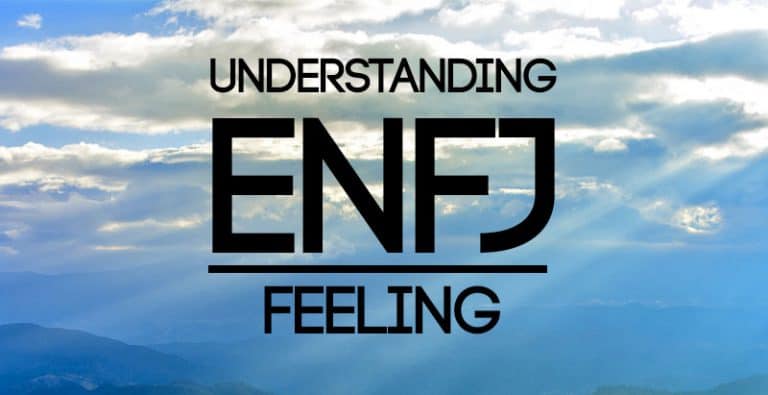
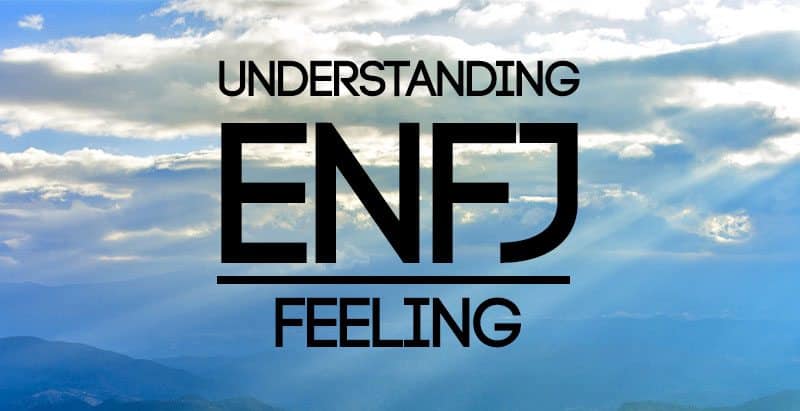
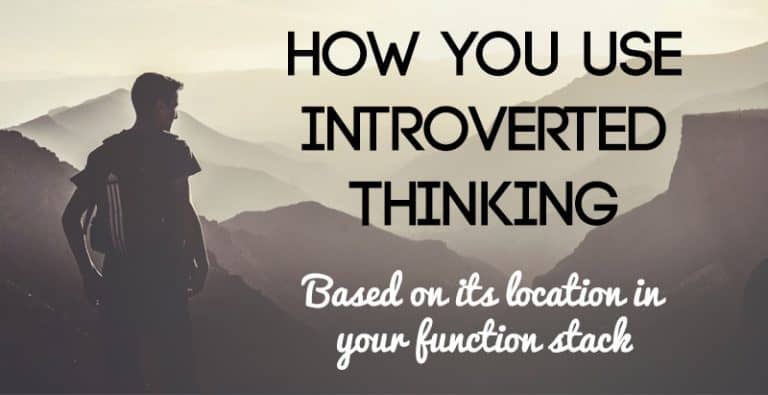
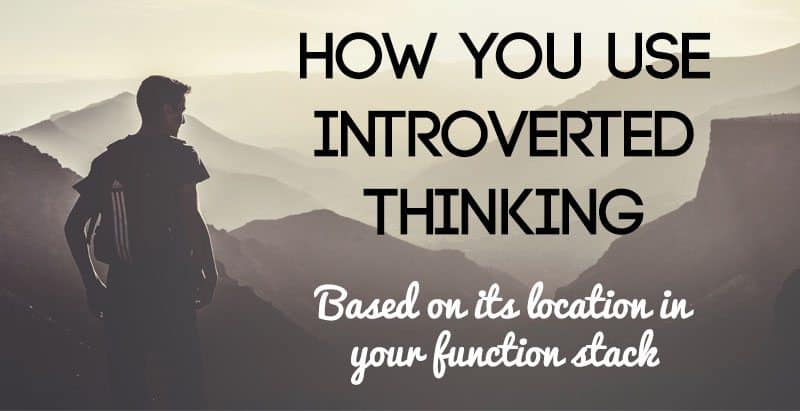
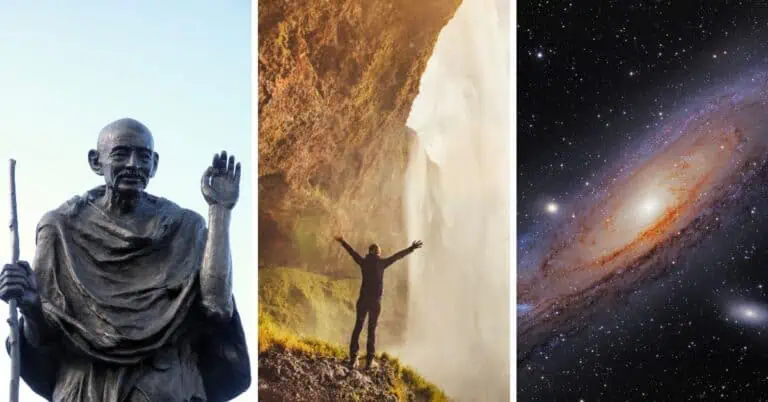
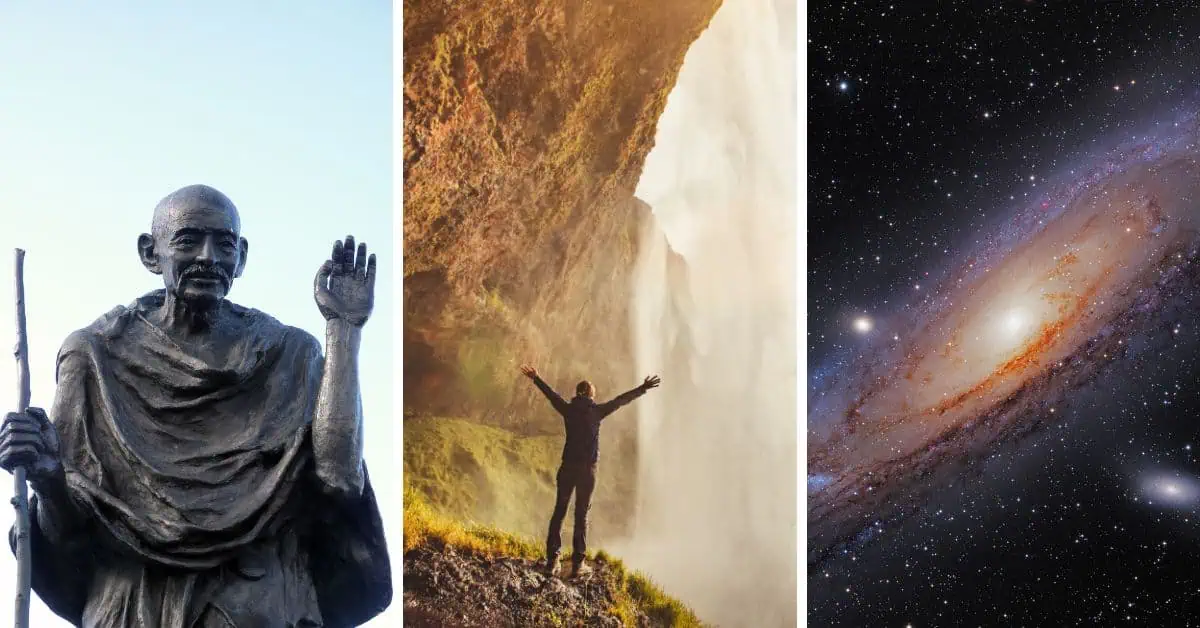





Is it possible to be ESTJ & ESTP?
I’ve taken the M-B a few times over years & it dawned on me this last time that I seem to get either/or.
Before C-PTSD — definitely more ESTP than in recent years since the symptoms began…shutting me down & more isolated.
I don’t think you have ever interacted with an INFP.
I would love it if you please do this article with the enneagram types on a deserted island? 🙂
Thank you so much for the morning rotflmao. Your writings in pure fiction are worthy of books in the individual personality types, though I probably couldn’t afford a copy. Keep up the fun ;p
Omg, i have a good laugh with this 😂. Thanks for the fun! Especially because of the NTs gang in this take, i just can’t– hahaha. (INTJs and ENTPs are so cute in this one, i like it).
Your writing is so good and well-delivered, though. It’s like reading a Hybrid Headcanon and short fanfic story.
great fun and uncomfortably accurate.
Somehow the thought of being alone in a deserted island, just for a temporary amount of time, seems comforting. No random people around to disturb my silence. Yet I’m not practically smart enough to figure out things in the way your stereotype of an INTP would react in a situation, hahaha, but I’d like to be practically smarter at some point. Maybe not now, since I’m lazy, but it would be nice to be smart that way too.
Omg 😂 so well written. As an Infp, I could easily imagine myself in every single scenario you mentioned 🙂